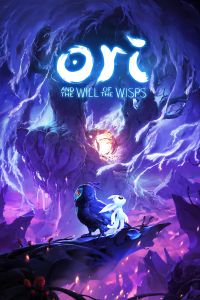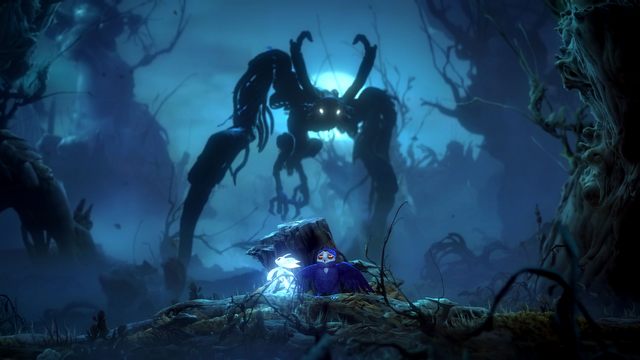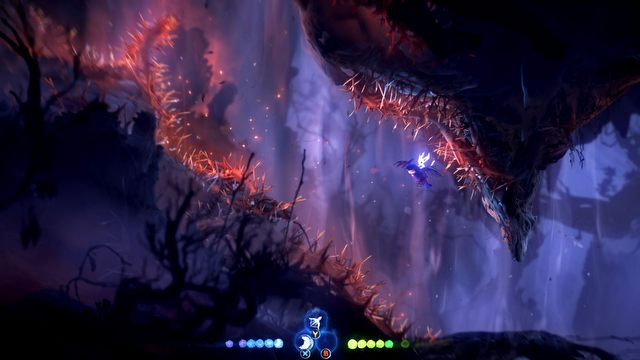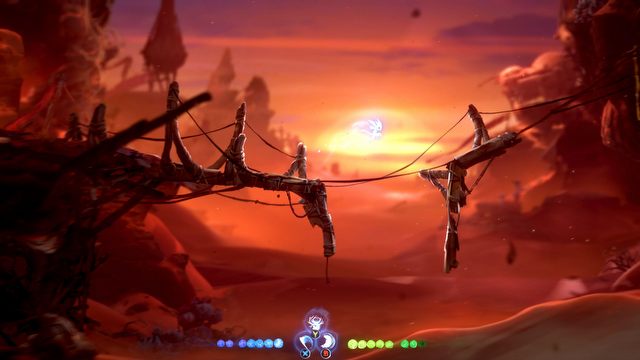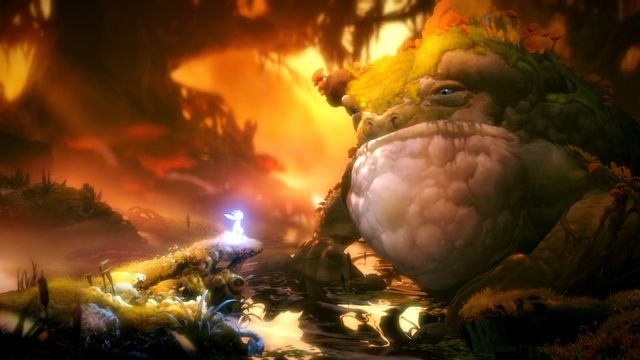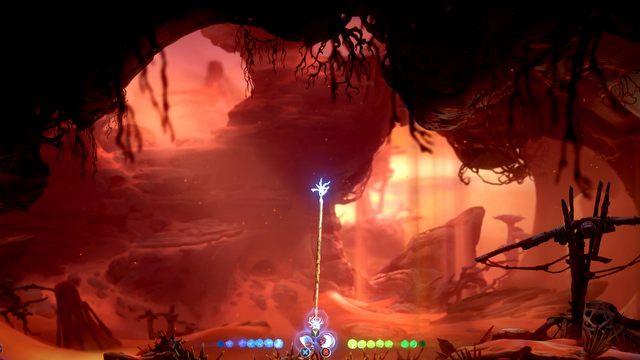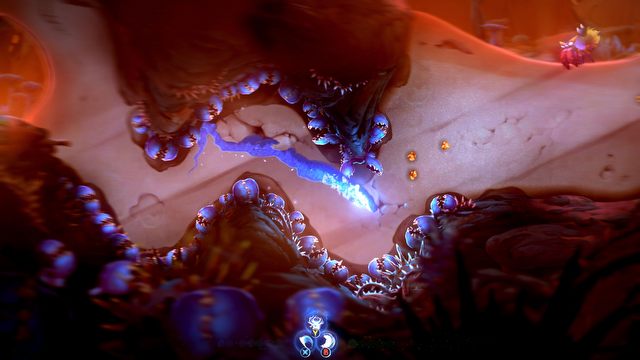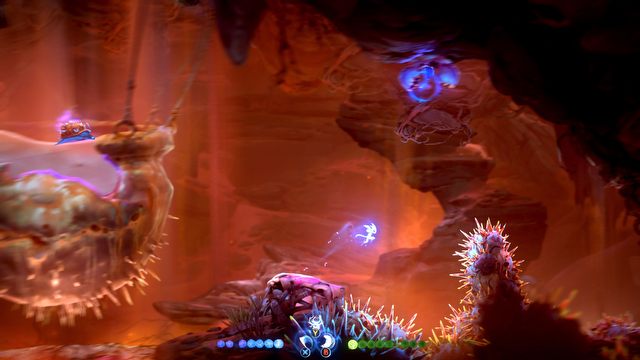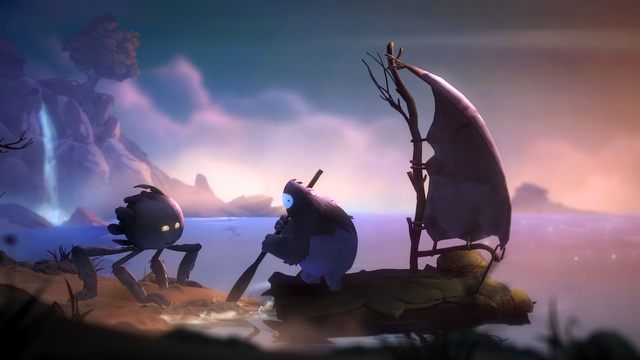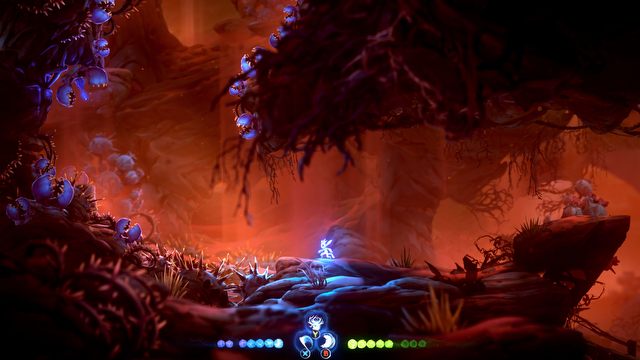How to Make a Perfect Game? Ori and the Will of the Wisps Review
Ori and the Blind Forest was an outstanding game. Its creators were probably aware of this and knew that in order for the sequel to match the original, several changes had to be made. Did it work?
The review is based on the XONE version. It's also relevant to PC version(s).

- wonderful graphics;
- outstanding narrative;
- evolution of game mechanics and side quests;
- accurate controls, like in the sequel;
- wonderful music;
- ...a little easier than the first part;
- ...a little easier than the first part;
- Before patch: graphical errors and glitches, including faulty save function;
After loading the game, the first two attempts to launch it ended in disaster. A running hero appeared on the screen, diversifying the waiting-for-the-menu-to-load experience. After a few seconds, the animation faded out, and a second later, my Xbox One X would die. Completely.
The third time, Ori and the Will of the Wisps finally worked. I tested a few other games in the meantime, and they ran without problems. And though it eventually started working, the festival of bugs and glitches that commenced soon thereafter made me quite combative about Moon Studios' latest game. A game that's absolutely fantastic, a worthy successor of Ori and the Blind Forest. That's something I wanted to get out of the way quickly – despite the misfortunes, and even though I sneered at the studio for handing over such a buggy review copy, the game is essentially an extraordinary experience, perfectly combining thoughtful gameplay suctions, a solid narrative, and some exceptional music. It may not be as fresh as the first part, but it still found room for some innovations.
How Ku the owl learned to fly
After completing the first adventure, Ori made new friends. One of them is the little owl Ku, who grows up in the company of our forest spirit. Finally, it's time to learn to fly. But Ku has a problem – she hasn't enough feathers.
From the very beginning, the narrative causes strong emotions. There's both happiness and sadness. From time to time, there are short, interactive inserts, and all this is complemented by fantastic music by Gareth Cocker.
Thanks to his ingenuity, Ori makes it possible for the owl to fly, and she starts carrying him on her back. Merry times end when a storm breaks and our heroes fall, divided over the Niwen forest – a new, dark and corrupt land. Ori's first task will be to find the friend.
Landscape after five years
Five years ago, when the first part of Ori's adventures was released, the competition in the genre of 2D metroidvania wasn’t as fierce as it is today. And although the main thrust of the original wasn't its uniqueness – but rather that it was an incredibly passionate chunk of code – in 2020, its sequel has to compete with such games as, for example, Axiom Verge or Hollow Knight. Both of these have been incredibly successful, and widely popular – for a good reason.
With Ori and the Wisps, the devs don't fix what's not broken. Rather, they use old, proven ideas, incrementally developing additional elements. In the first quarter of an hour, you will certainly feel at home if you've played the original – Ori jumps, attacks enemies and moves in a two-dimensional environment in the same way as before. A little later, though, we begin to slowly discover the first novelties in the mechanics.
Who don't like changes…?
The hero's linear development was replaced with the ability to obtain skills in any order. We can get a stronger magnet, increasing the distance from which we can attract energy orbs, we can expand health and stamina bars, or get a skill that lets us conveniently hold onto vertical surfaces. There are also skills that allow you to deal more damage – at the expense of receiving more damage from opponents. Trade-offs. But no matter how many skills we buy, we will never be able to use them all at the same time. At the beginning of the game, we only have three Stones, to which we can assign them. Thorough exploration will reveal special locations, where we will be able to activate more stones after defeating a few waves of enemies. There are five of these stones, and they are usually located at the ends of seemingly blind and empty corridors.
The new character development system is one of my favorite elements of the game. It provides nice flexibility, really allowing the player to customize the protagonist to match their favorite style. After I acquired the skill that allows to stick to vertical surfaces, it became an inseparable element of gameplay, and I never considered removing it. Because with it, the game felt more comfortable, more fun. Same with the magnet. You didn't mind excessive jumping? Go for a different skill – there really is a lot of freedom. Moreover, some of these skills can be enhanced three-folds by spending in-game money.
Here we come to another significant novelty. The forest and its surroundings, including the fantastic desert, are inhabited by various creatures you can talk to. This works wonders for the narrative, letting us learn secrets of the new locations, buy maps or the mentioned improvements, and also get side quests. There are quite a lot of them, and they usually do not direct us to a specific place, but rather mysteriously suggest to, for example, give some warm soup to someone in need. But don't fret, Ori doesn't suddenly change in Dizzy, and you don't need to try every item you have on the characters, because everything happens automatically after starting a conversation. These changes greatly influence the pace of gameplay, and often require backtracking (as in any metroidvania, but that's not the point). If you don't feel like going back, you won't miss anything substantial.
Remember the Ginso Tree?
The world in Ori and the Wisps is full of winding corridors. I got the impression that it is more complex than the first part. I don't think I had any significant problems with finding my bearings in the original. Now I was getting lost. Obtaining the right maps isn't easy either, because finding Lupo, who sells them, is pretty difficult in the first place. At some point, the storyline splits into three paths... for a good twenty minutes I circled the maze, unable to decide which way to go. I loved these moments.
Many people complained about the fragments of the original that required learning the sequence of movements by heart when escaping threats. If you've only completed the first game, you will certainly remember the Ginso Tree, and the recollection might be unpleasant – but rest assured, I haven't noticed a moment like this in the sequel. Escapes are still part of the gameplay, but no longer require repetitions. In any case, my gamepad came out unharmed.
I don't want to reveal too much; learning the history of Ori and Ku's friendship is fun, so I'll probably proceed to complaining about the bugs that almost spoiled my experience. It was really close.
Waiting for the patch
RELEASE-DAY PATCH
Microsoft reported that the technical problems encountered by reviewers, which we mention below, were fixed in the launch patch. Therefore, the retail version of the game should work much better than ours did. Before publishing this text, we were able to check some of the issues, and they were actually addressed. However, the error with the saving system still prevails.
I told you about my problems launching the game, but there were also issues with the save system. The game automatically saves at fairly densely located control points, and when the system is working, it's all pretty great. Problems begin when it doesn't, although it ostensibly does. Even in places intended for manual saving, i.e. in teleportation points. Everything looks nominal, the game even displays a message about having created a save, but only after you die will you learn that a save wasn't actually made for the past hour. At some point, I was convinced I'll have to start the game over – I couldn't make any progress, and completing the game on a single life is less probable than me going to space in the next decade.
Some graphical blemishes were also apparent at times. Sometimes, when you want to go to main menu, the confirmation button gets locked. Turning on the map takes a long time, because the game refreshes it before our eyes. That's not necessarily a glitch, but it looks bad. I will also add that when you zoom out as much as possible, you will not see a picture depicting the game world, as it was in the first part.
It's still a great game
The save system error didn't spoil my fun. I don't applaud sending a game in this condition to reviewers, though I realize these issues might have not arisen for everyone. Still, Ori and the Will of the Wisps is a great metrodivania. The developers did not look for new solutions where they weren't required. They opted for tried solutions, but the game never feels derivative or unoriginal. Not at all. It's often surprising. The pacing suffers a little because of the side quests, but whether we want to engage in them or not is completely up to us.
Was this game as exciting for me as the original? Not really. Have I had as much fun as with Blind Forest? Definitely. Perhaps even more, as I was spared the anguish of repeating the escape stages. Although the need to learn fragments of levels by heart also had its charm. Moon Studios have once again provided players with a very successful game.
ABOUT THE AUTHOR:
I love the first part of Ori and the metroidvania genre in general. I started my adventure with it a long time ago, on sixteen-bit computers, and I'm still not tired of it. I don't specify the exact time required to complete Ori and the Will of the Wisps because it all depends on how involved we are in the side-quests. It took me about ten, and I still have a few things to do.
DISCLAIMER
We received Ori and the Will of the Wisps from Microsoft, the game's producer and publisher.
Ori and the Will of the Wisps
How to Make a Perfect Game? Ori and the Will of the Wisps Review
Ori and the Blind Forest was an outstanding game. Its creators were probably aware of this and knew that in order for the sequel to match the original, several changes had to be made. Did it work?
